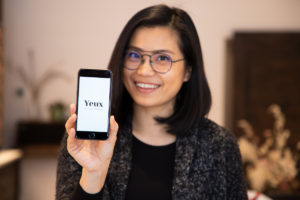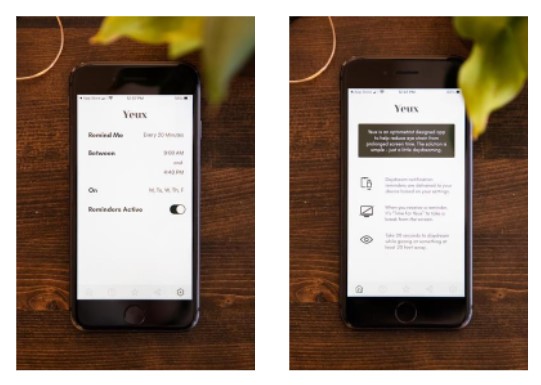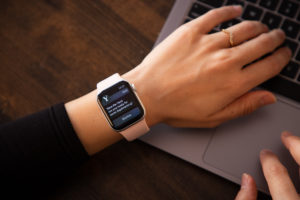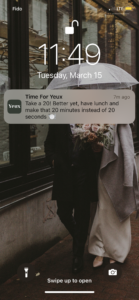

“I looked online to see if there was a resource I can guide my patients to, but there was nothing specifically designed in the market. The apps were either too complicated or not customizable to one’s work schedule,” she says. When she shared this concern to her high school friend, who works in tech, he encouraged her to develop her own app rather than hoping for something good to come out in the market. “I reached out to my other friend, who works as an industry tech provider, and he introduced me to an app developer,” Dr. Liang says.
SMALL BREAKS TO REDUCE EYE STRAIN
The sole focus of the app is to send reminders with a message to daydream – take a break from the screen. “When I was little, my mom would always tell me that looking at the color green, or anything in fact, would be good and protective for my eyes. I was encouraged to be ‘surrounded’ by green visuals,” she says laughing. “Although it was only a myth, I still made the app’s central color a deep green, something that makes users feel as if they’re at a spa.”


Once someone downloads the app, they’re asked to answer three simple questions to personalize reminders, such as inserting a work schedule and entering a desired reminder time interval, which ranges from 20 minutes to an hour. People can choose specific days of the week if they have an irregular work schedule or a special event. Users can also manually start a session whenever they are exposed to more screen time outside of their regular work schedule.


SPREADING THE DAYDREAM
“Patients are amazed whenever I bring up the app during consultations, and a lot of people say that it’s exactly what they’re looking for,” she says. Dr. Liang places a QR code in her exam room where patients can scan it with their camera and automatically get directed to the download. “I built it out of the necessity to reduce eye strain in my patients’ lifestyle, so I’m overjoyed to hear and see positive reactions,” she says.


The app can be downloaded on the App and Play Store and Dr. Liang can be reached here.
“The whole journey has been exciting, and the results worked out better than I expected,” she says.



